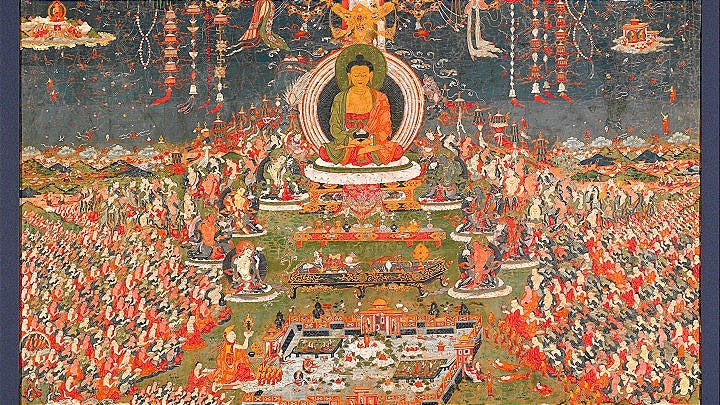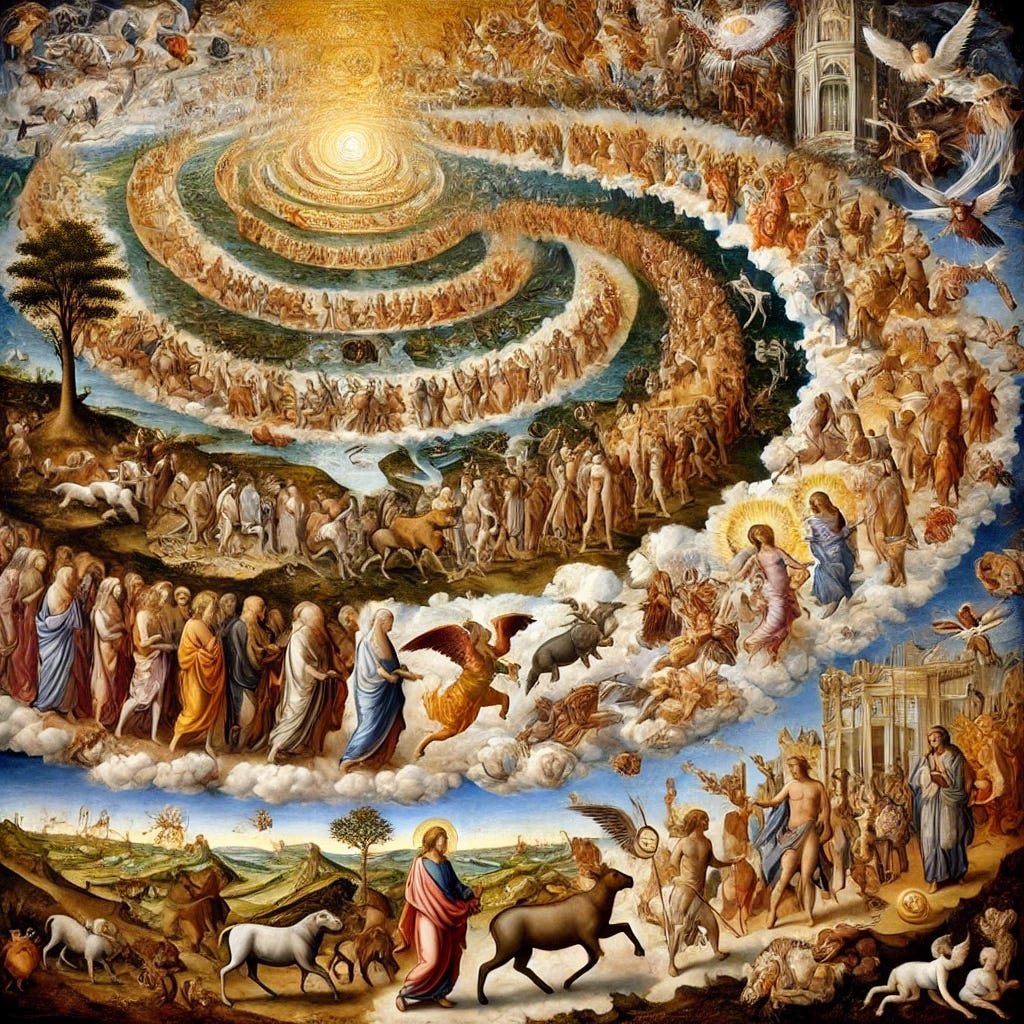
When I discuss the idea of reincarnation — whether from Rudolf Steiner, Hinduism, or Buddhism — I often get asked the same question: If there are so many more people alive now, by far, than at any time in the history of the world, how could there be so many reincarnating souls? The numbers don’t seem to add up.
Apparently about 7% of every human who ever lived is alive now. The Population Reference Bureau estimates that approximately 117 billion humans have lived on Earth since the beginning of our species, 150,000 years ago. This includes everyone alive today (about 8 billion people) plus all those who came before us (about 109 billion).
Of course, this question of quantification is downstream of the issue of whether reincarnation is, in some sense, a valid phenomenon instead of a useful delusion — like the idea of Heaven in Christianity or Paradise in Islam — or a fraudulent claim. From a skeptic’s perspective, all of these religions ideas of an afterlife are merely fantasies with a social function: They keep the downtrodden from rebelling. The fantasy of a “better world to come” gives the poor a rationale for accepting their deprived circumstances, and gives the rest of us some hope and succor.
For reasons we can explore (also I wrote about it in 2012: The Return of Quetzalcoatl), I find reincarnation, understood properly, more sensible than the idea of death as permanent and utter extinction. I also find reincarnation more logical (and believe there is better evidence for it) that the concept of one single human life leading to eternal damnation or permanent Heaven. For those seeking evidence, you might explore Dr. Ian Stevenson’s work.
Stevenson investigated over 3,000 cases of children with detailed memories of past lives. He documented striking evidence supporting reincarnation, including birthmarks and birth defects that corresponded precisely with wounds sustained in a previous life. In Where Biology and Reincarnation Intersect, among other works, he presented compelling cases where physical characteristics—like a child born with a missing finger who remembered a past life where that finger was severed—suggest that consciousness may carry physiological imprints across lifetimes. His research, taken seriously, challenges purely materialist explanations of human development.
From a theoretical perspective, the Indian physicist Amit Goswami proposes that consciousness—not matter—is the fundamental reality. We share the monistic idealist view, which apparently is now also favored by ChatGPT4.5:
In Physics of the Soul, Goswami uses quantum physics to explain how nonlocal consciousness can persist beyond physical death. He argues that quantum nonlocality allows for a “quantum monad” (essentially a soul or aggregate) that records karmic memory patterns in what he calls “quantum possibility waves.” These can influence the selection of future bodies during reincarnation. Goswami suggests that when we die, these quantum patterns of consciousness don't dissipate but rather exist in a realm of potentiality until conditions allow them to “collapse” into a new physical expression, thereby explaining how specific patterns of thinking, willing, and feeling carry forward across different lifetimes. The end of this process, Goswami theorizes, could be the realization of the individuated being’s self-identity with the underlying field of nonlocal, non-dual potentia.
Since the issue of number — available quantity of souls — seems a serious obstacle that stops many people from taking reincarnation seriously, let’s explore it. According to Steiner’s model, not all human souls incarnate simultaneously—many remain in spiritual realms during any given historical period. His concept of spiritual evolution includes the idea that souls undergo what he called “rhythmic patterns” of incarnation, with some entering physical embodiment while others undergo development in non corporeal or spiritual worlds for long durations.
Also, for Steiner, as humanity evolves, entirely new souls enter the incarnation cycle from different spiritual realms. As he proposed in Outline of Esoteric Science and other works, not all human souls that exist today have gone through the entire cycle of Earth’s evolution from its beginning. At certain junctures, souls who had previously remained in the spiritual world without descending into earthly incarnation will enter the stream of human evolution. Some souls remained behind at an earlier stage and then enter Earth evolution at the point appropriate to their development. In Outline of Esoteric Science, he wrote:
How long a human I spends in the spiritual world between death and a new birth … depends on the evolutionary conditions a particular individual undergoes during this time. After a certain time has elapsed, evolution leads the I to a state of spirit that can no longer be satisfied by inner spiritual experiences. It then begins too long for a changed state of consciousness that finds satisfaction in being reflected by physical experience. The individual’s reentry into earthly life results from the interaction of this inner thirst for embodiment and the possibility the cosmos offers of finding a suitable bodily organism.
Some souls reach a point where they can no longer continue to develop here, and must incarnate on other worlds (or “deviant moons”). Steiner believed that some animals, also, gradually evolve toward individualized consciousness, eventually developing the more complex structures and levels of awareness required for human incarnation.
This concept of spiritual evolution across various conditions of being or levels of sentience allowed Steiner’s system to account for expanding human populations. He also discussed how the “I” or individual self develops differently across historical epochs. Steiner proposed that human beings have undergone multiple incarnations through various planetary conditions, leading to diverse levels of development. Steiner described the evolution of human beings through successive planetary stages (which he named, confusingly, Old Saturn, Old Sun, Old Moon, and Earth), each contributing to the development of different aspects of the human constitution. During these stages, certain beings got trapped at earlier levels of development, while others progressed further, leading to variations in human capabilities and consciousness.
Earlier periods featured more collective, group-soul experiences of consciousness, while the modern era represents an impulse toward greater individualization. This evolution toward stronger individual identity out of the earlier group souls could also manifest as what appears to be "more souls" from our current viewpoint.
Buddhist traditions approach this question differently.
Keep reading with a 7-day free trial
Subscribe to Liminal News With Daniel Pinchbeck to keep reading this post and get 7 days of free access to the full post archives.






